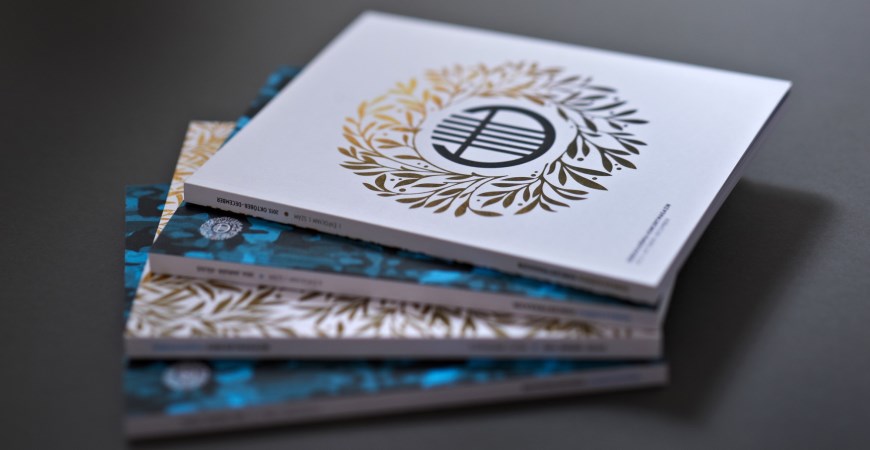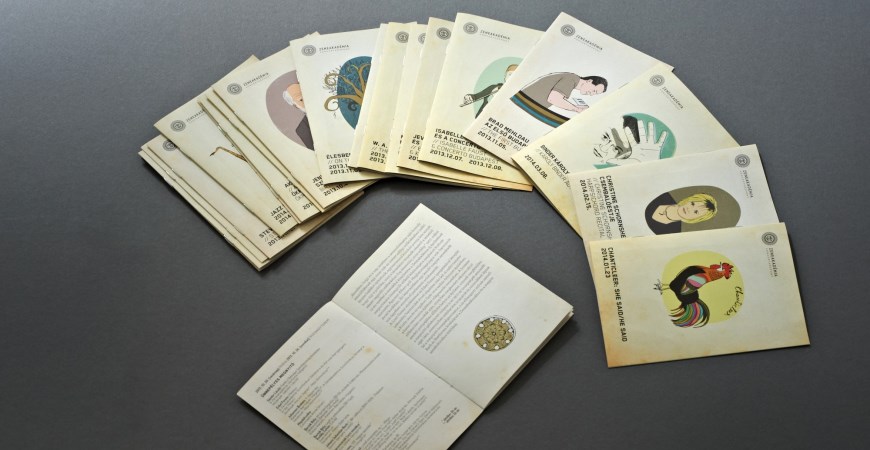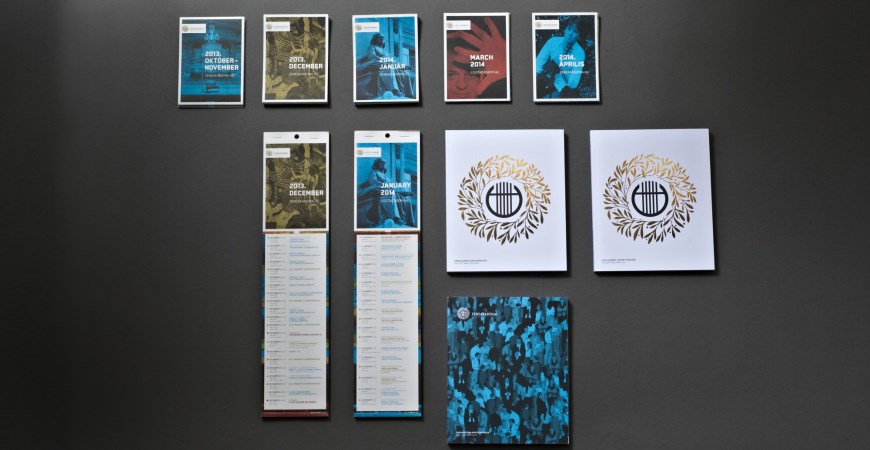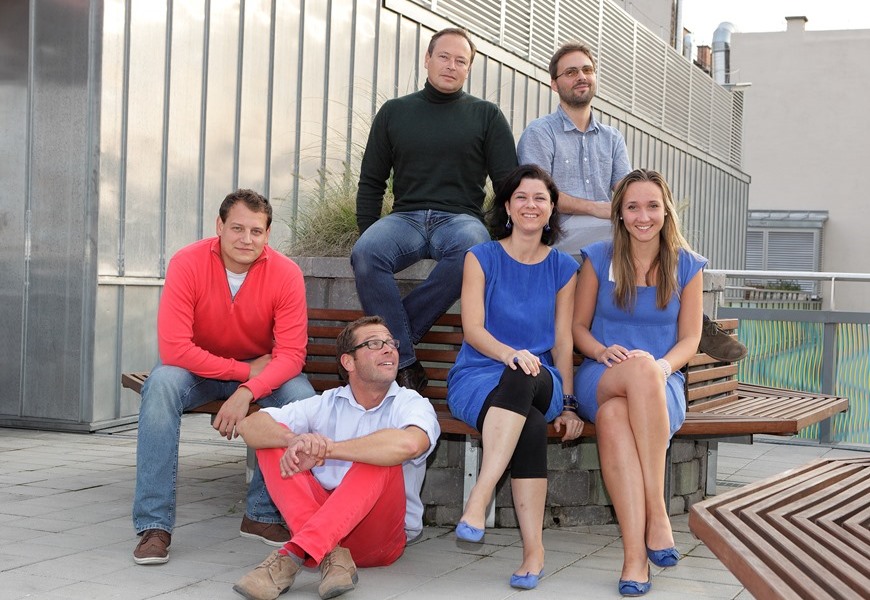The Design Oscar Goes to Liszt Academy
Liszt Academy’s new corporate identity created for the Fall 2013 reopening won the most prestigious international award of the design industry.
The Red Dot Design Award acknowledging the design achievements of the world's leading brands was granted to the Liszt Academy for its distinctive, unified corporate image representative of its dual identity. The Liszt Academy's corporate identity, which has been created under the charge of communications director Imre Szabó Stein jointly with Allison Group – comprising among others the concert magazine, the single-evening concert booklets, the business cards and the logo sets – won the appreciation of the 24-member international jury among more than 7,000 entries.
The New Image of the Liszt Academy – short film
The markedly novel corporate identity, which does credit to Liszt Academy's creative team headed by Imre Szabó Stein, draws on the architectural iconography of the reconstructed building, and reflects the unique conjunction of education and concert life that has been established within the renewed institution of Liszt Academy in the wake of its reopening on 22 October 2013. The communications director of Liszt Academy had only six months to build a complete corporate image worthy of a global brand. "Our job was all the more difficult in that we had to decide a lot of things in advance, from the publication structure to the programme communications and the specific aesthetic foundations, without having at our disposal an earlier continuous activity as immediate past, or more time. Here, the vision was born in the mind earlier than cautious deliberation could have broken it down to its components," said Imre Szabó Stein. Under his direction, the staff of the communications directorate, besides preparing a number of complex, multi-round public procurement tenders, set out to conduct "deep drilling": from the depths of the archives, libraries and museums they unearthed documents, photos and motion pictures, they explored the history of the institution and the building, in the process analyzing domestic relations and the international market.

However, the starting point in creating the new corporate identity was the architectural heritage of the historical building on Liszt Ferenc Square: its motifs, iconography and philosophy – the Art Nouveau of the turn-of-the-century Budapest. "Our visual strategy was built on the arc of tension between patina and progress,' as the communications director put it. The logo is formed from the unity of the wreath woven from laurel leaves from the ceiling of the Grand Hall, considered a sanctuary of music in the international art scene, with a lute positioned in the centre, and the name set in a modern typeface. The base logo employing shades of gold reflects the strong progressivity of tradition and integrated institutional duality. (The separate logo of the Liszt Academy Concert Centre transforms the laurel wreath into a concentric circle, evoking the Apollo solar motifs of the building.) The final result is a visual logo with a defined identity, immediately identifiable to foreigners as well, which is created from the counter-positioning of conceptual elements.

Concert magazine
This new visual identity contained within a coherent and consistent system also appears in the publication portfolio. Here too, the elegant, purified image reflects the patina and progressivity of the integrated institution. The concert magazine forms the main pillar of the portfolio. The magazine, which also involves the fellow arts – in the case of the first editions, photography – not only provides a detailed concert guide but also publishes interviews, portraits and feuilleton essays, a genre which has regrettably disappeared from the domestic cultural press today. As opposed to the premium magazine, the monthly programme calendar printed on recycled paper only contains practical information, with its special typography giving it an ‘insider' feeling. The single-evening concert sheet series of the Liszt Academy (also printed on environment-friendly paper) is completely unique in the international concert scene. The pocket-book like, intimately formatted leaflets, which contain overtly opinion-oriented essays on the performances and illustrations on a par with the world elite of contemporary book designs initiate the reader into the mystery of live music.

Evening concert sheets
The new tonal palette of the Liszt Academy integrates the publications, website and advertising portfolio. Cyan, the dominant color of the brand image, registering classical music, the closely associated deep blue of university events, the proud gold of opera, the fiery red of jazz, the joyful yellow of folk music, and the optimistic green of programmes for the coming generation all combine to form an instantly identifiable, emotion-generating color coded system. The color codes, referencing Art Deco poster art, are asserted in the posters and advertising of the Liszt Academy as well. Photographs tinted by using the so-called duotone reproduction process, the immediately recognizable typography and the prominently displayed logo form a unified image unparalleled not only in Hungarian cultural life but indeed in the entire creative industry of Hungary. The clear intention of the communications strategy hallmarked by the name of Szabó Stein is to free the Liszt Academy and the diverse and rich world of music represented by it, which can be described as the duality of patina and progress, from the ivory tower of elite culture.

Monthly programme calendar
In the 2014 Communication Design competition, Liszt Academy was the only one from the world's music institutions to win the Red Dot of the international design elite in the top category of corporate identity. The jury rewarded the most forward-looking and most coherent "creations", which best represent the unity of visual appearance and intrinsic value. In recent years the awardees included the international Rotary Club, Levi Strauss & Co., Süddeutsche Zeitung, the AP news agency, the BMW Group, the Porsche Group, Lamborghini, the London Education Centre, Leica Camera, the Van Gogh Museum of Amsterdam, Ernst & Young, or the world-famous "pencil manufacturer" Faber Castell. The Red Dot Award in Product Design has existed since 1954, while the Communication Design competition was launched in 1993. This year, out of the 7,096 entries coming from over 60 countries – from Algeria and the USA to Nepal and the Republic of Belarus – the jury awarded 569 projects. In the corporate identity top category 63 projects received the red dot. The award winning works will be displayed in the major contemporary design collections, as well is in the Red Dot museums of Essen and Singapore. This is already the third time that Hungary has been awarded by the top design professionals of the world in a section similar to the 2014 corporate identity category: in 2011, the image of the Israeli Cultural Institute, and in 2012 the new brand identity of the Kassák Museum, the result of a two-year process of distillation from Kassák's visual art, gained the Red Dot. (In the product design category, several Hungarian designers won the Red Dot Award for their logic games, customs lamps, or medical devices.)
Prior to its victory at the Red Dot competition, Liszt Academy's new corporate identity has already won the appreciation of the Hungarian creative industry as well. In the prestigious Golden Blade competition of 2014, the Liszt Academy came out as category winner in receiving the Bronze Blade for the single-evening concert booklets, printed on environment-friendly paper, which stand out as a completely unique form of publication in the international concert scene. In the same competition, the two published issues of the Liszt Academy Concert Magazine qualified for the final shortlist in the category of "design solutions – catalogue/calendar" – but ultimately no awards were granted in this section. In May 2014, the publications of the Liszt Academy made the shortlist in three categories in the Hypnosis Creative Advertisement Competition, which was organized primarily for advertising agencies. In the prestigious Hungarian advertising and media competition Media Design organized in December 2013 by the Kreatív Group, the single-evening concert booklets of the Liszt Academy won second prize in the section of "flyers/brochures", while the 2013 concert magazine was awarded third place among the "monthly or less frequent publications".
The Red Dot Award winner branding publications, among them the latest Concert Magazine, along with the image films presenting the institutional identity can be viewed in the recently created "Identity" section of the Lisztery, Liszt Academy's Multimedia Centre.

Imre Szabó Stein and his team


